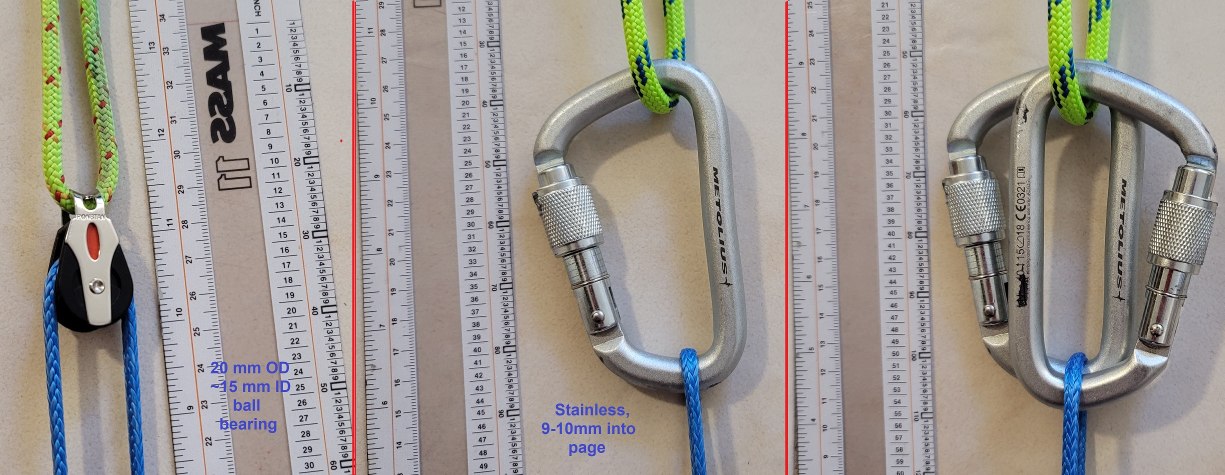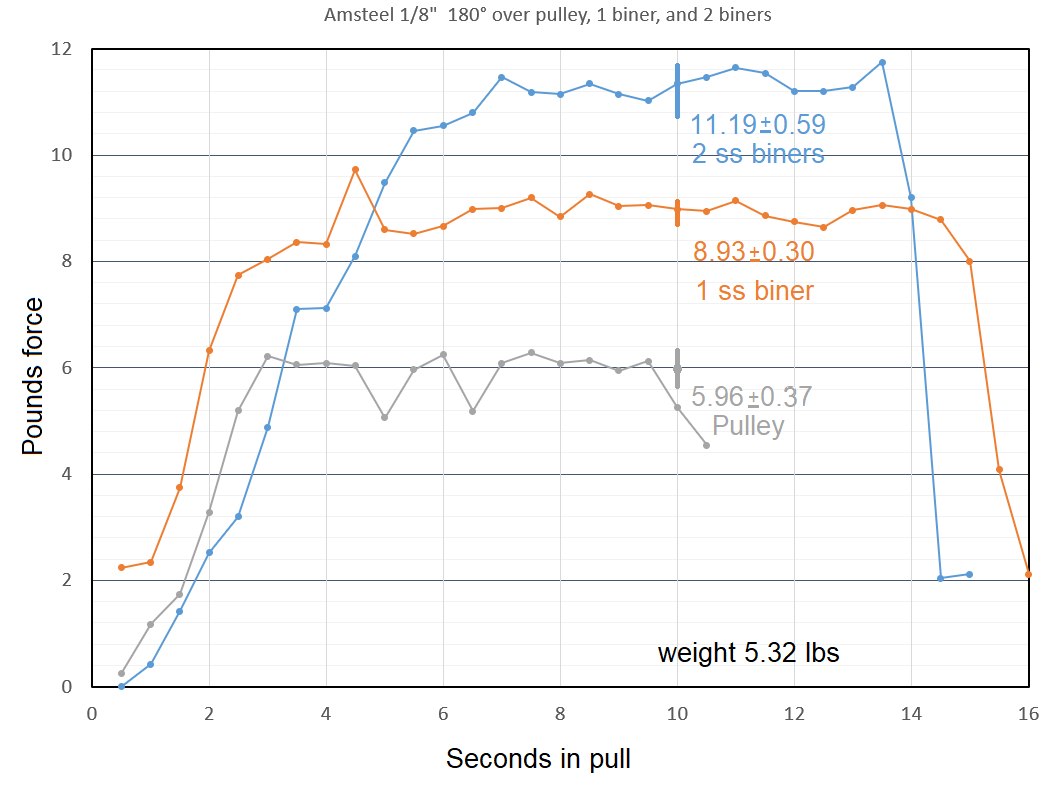
“We all know” that Dyneema is slippery—DSM’s own figures show it has a coefficient of friction less than that of Teflon. But what exactly does that mean, when a very thin, braided hollow-core “rope” (such as Amsteel) is pulled over a carabiner? The results surprised me (a little).
The test involved pulling a strand of 1/8” Samson Amsteel Blue, bending 180
degrees, over a 1) Ronstan bearing pulley; 2) one stainless steel carabiner, 3) and two stainless
carabiners.

A 5 lb dumbbell was attached to the Amsteel on one side, and I pulled down on the other with a digital hanging scale (I recorded the display on a video camera attached to the scale). I did this in my staircase (which has a reinforced anchor in the ceiling), in such a way that I could walk down the stairs while pulling evenly, adjusting my hand position to keep the scale line nearly vertical. The rope was pulled against the weight before each measurement, to remove the “construction stretch.” (With the harness, the dumbell actually weighed about 5.32 lbs.)
The results:

The "averages" were computed from the plateaus. (The hanging scale was tested against a baby scale, with which it agreed to 1%.)
Since the diameter of the tiny pulley (15-20mm) was still much greater than the diameter of the Amsteel (3.2mm), it was about 89% efficient. But I guess I was a bit surprised that the Amsteel over one biner was just 60% efficient (~10mm effective diameter), and over two biners, was just 48% efficient. I've done tests pulling an 8 mm polyester-sheathed kernmantle rope over an aluminum carabiner, and that was ~50-60% efficient. If one thinks the Capstan equation is a reasonable predictor, there shouldn’t be a difference between single and double carabiners, and the efficiency (for the low friction of Dyneema) should be higher.... maybe?
Pulleys are structured to help keep the rope round, unlike carabiners; and Amsteel does have a urethane coating. Samson ropes says the urethane ("Samathane") helps cut down internal friction, though I'm unclear how that would be accomplished. In my experience, the cord becomes more slippery as the urethane wears off, and I always run cords through a munter hitch several times so I won't get surprises later. This amsteel had been used numerous times before the tests above.
In his thoughtful treatise, “Belay Device Theory, Testing,
and Practice,” Jim Titt analyzed the contribution of bending to the energy loss
in a belay device, concluding it might be
~ 61%. This analysis is appropriate when the rope radius
approaches the
radius of curvature of the bends in the belay device (i.e., not like the tests above). As he also notes,
for
real ropes it is hard to separate “bending” from surface friction, as
the ropes
are made from multitudinous fiber bundles that interact with each other
(and
thus transmit a “surface” force through the rope). In a 12-strand braid,
a yarn that is initially on the outside dives under to be on the
inside within several yarn widths.